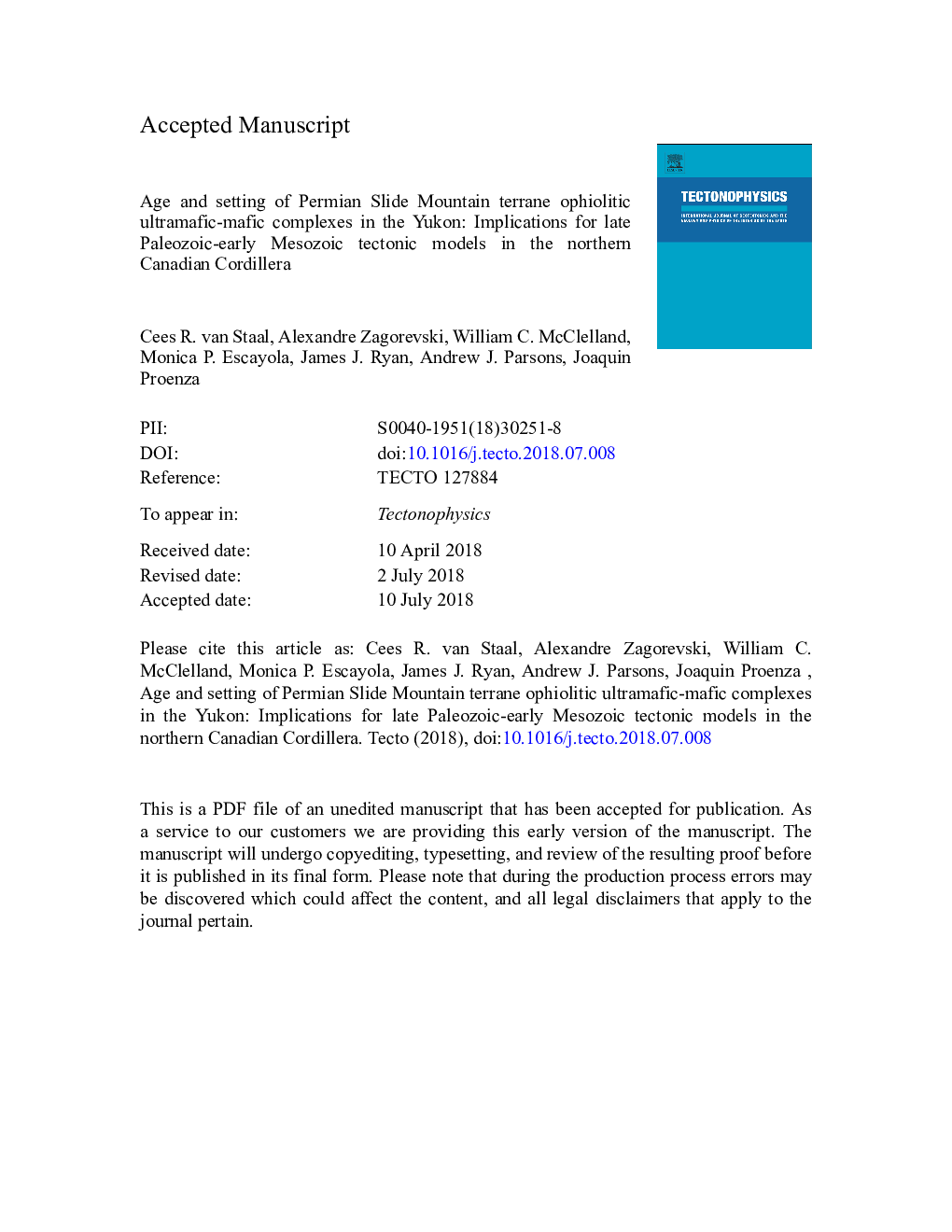| Article ID | Journal | Published Year | Pages | File Type |
|---|---|---|---|---|
| 8908623 | Tectonophysics | 2018 | 95 Pages |
Abstract
The studied Clinton Creek and Midnight Dome complexes represent suprasubduction zone ophiolites formed at ca. 265â¯Ma, consistent with analyses of other SMT ophiolites. Ultramafic rocks dominate most ophiolites. They lack sheeted dikes and contain relatively minor volumes of mafic plutonic and volcanic rocks, suggesting they formed in oceanic core complexes characterised by slow spreading and low magma productivity. The Permian ophiolites formed during or immediately after eclogite formation in YTT, coeval with or immediately preceding emplacement of orogenic peridotites into YTT due to hyperextension. Several tectonic scenarios are discussed. We propose that YTT is a composite terrane comprising a continental block and an oceanic arc-backarc complex with the latter obducted onto the former during the middle Permian-early Triassic Klondike orogeny. Obduction may have come from the west or east, but east-directed obduction is most consistent with geological constraints. Obduction was followed by initiation of west-dipping subduction east of the composite YTT; slab roll back causing extension in the composite upper plate, leading to exhumation of orogenic peridotites. Tectonic relationships show many analogies to the collision between Australia and the New Britain arc, in which collision in the Huon Peninsula of New Guinea is contemporaneous with extension in Australian crust in the adjacent Woodlark basin. Syn-orogenic Permian Klondike calc-alkaline magmatism is attributed to extension in a Woodlark basin-like setting rather than a representing a continental arc.
Related Topics
Physical Sciences and Engineering
Earth and Planetary Sciences
Earth-Surface Processes
Authors
Cees R. van Staal, Alexandre Zagorevski, William C. McClelland, Monica P. Escayola, James J. Ryan, Andrew J. Parsons, Joaquin Proenza,
